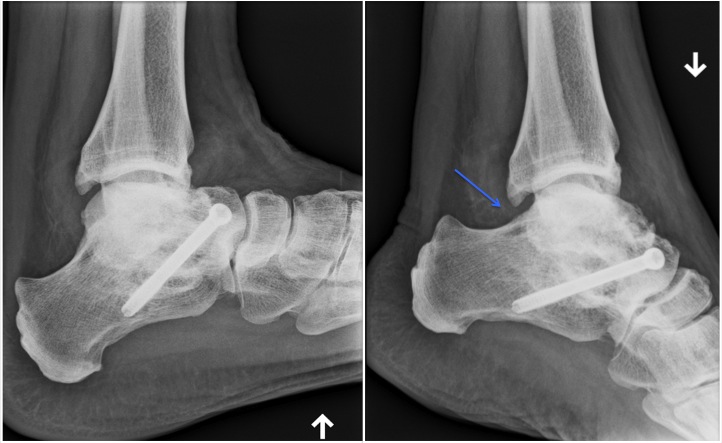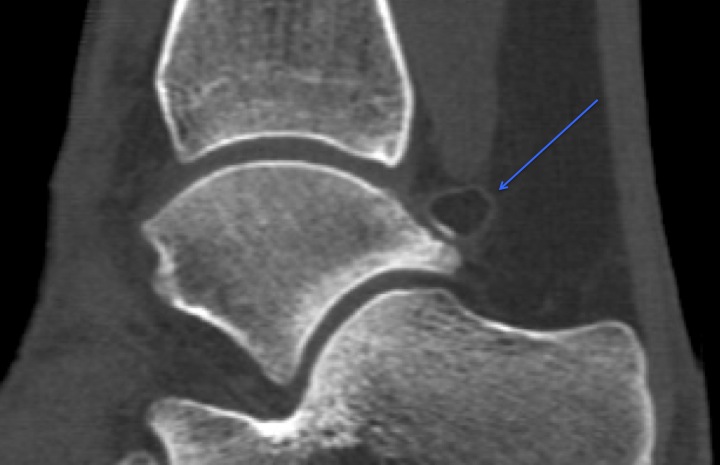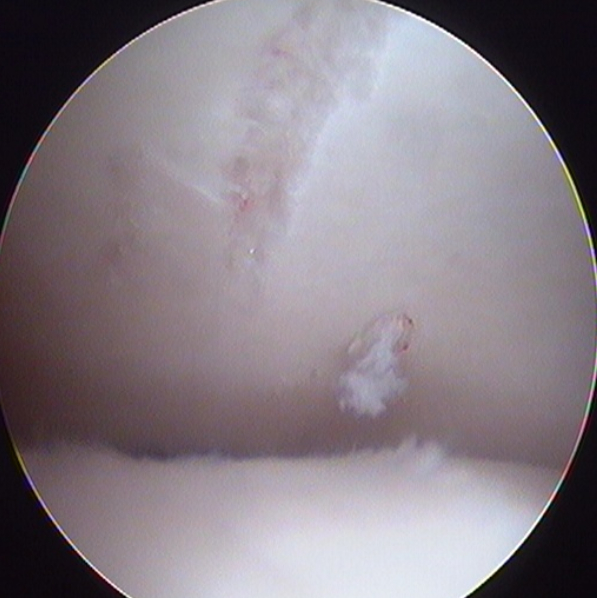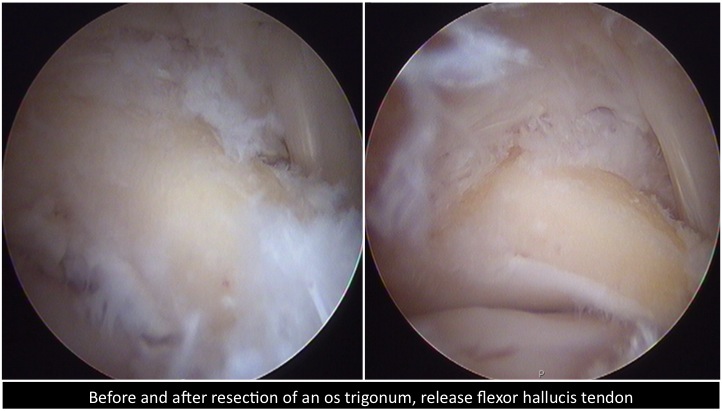Posterior impingement syndrome
Definition
You complain of pain at the back of the ankle joint.
Symptoms
The pain may be experienced as a shooting pain when descending a slope or a staircase, or as a pain in one specific spot at very specific movements.
Only rarely we find a restriction of movement. Unlike the front of the ankle joint, this region is much deeper and is covered with soft tissue, which impedes generating the known pains.
However, certain clinical tests, such as the sudden downward movement of the foot relative to the ankle, the rotation of the foot in maximum equinus position,… can generate the known pain.

Yet, one should always look for cartilage injuries, beginning osteoarthritis, ligament lesions,… by means of additional examinations, such as a ct-scan without contrast.
Causes
Pain on the medial side can be caused by bone structures, which were torn off during previous trauma and/or by the narrowing of the channel, through which certain tendons must glide, with the result of inflammation. In other cases, especially when the pain is on the outside, the cause may be found in the presence of parts of the talus that are too voluminous.


The pain is caused by inflammation of certain structures of the joint, which get chronically irritated by repetitive movements, often after experiencing a trauma, such as a “trivial” sprain or an ankle fracture. Typically this is also found in ballerinas who overload this part of the joint during the grand plie and demi plie.
Diagnosis
The diagnosis is mainly clinical, if one can generate the well-known pains. Additional examinations may include:
- an X-ray;
- a ct-scan with or without an intra-articular of cortisone in the joint if cartilage damage or loose fragments are suspected;
- and/or a magnetic resonance.

Treatment
Initially, treatment is symptomatic. With the help of physical therapy, it is attempted to reduce the inflammation locally. In case of persistent pain, an injection in the painful area is suggested, with the aim of confirming the diagnosis once again, but mainly because it helps about 60% of the patients permanently.
In those patients whose symptoms unfortunately recur, despite an injection, arthroscopy may be proposed. The arthroscopic debridement of the back of the ankle joint is done through two small skin incisions, and this in day hospital.


Postoperative policy
To avoid that the hematoma, which inevitably develops after surgery, will cause the same symptoms, it is strongly recommended to move the ankle into the extremes of movement immediately after waking up.
One can also immediately lean on the ankle, except when a cartilage injury (6 weeks of non weight bearing) was operated.

